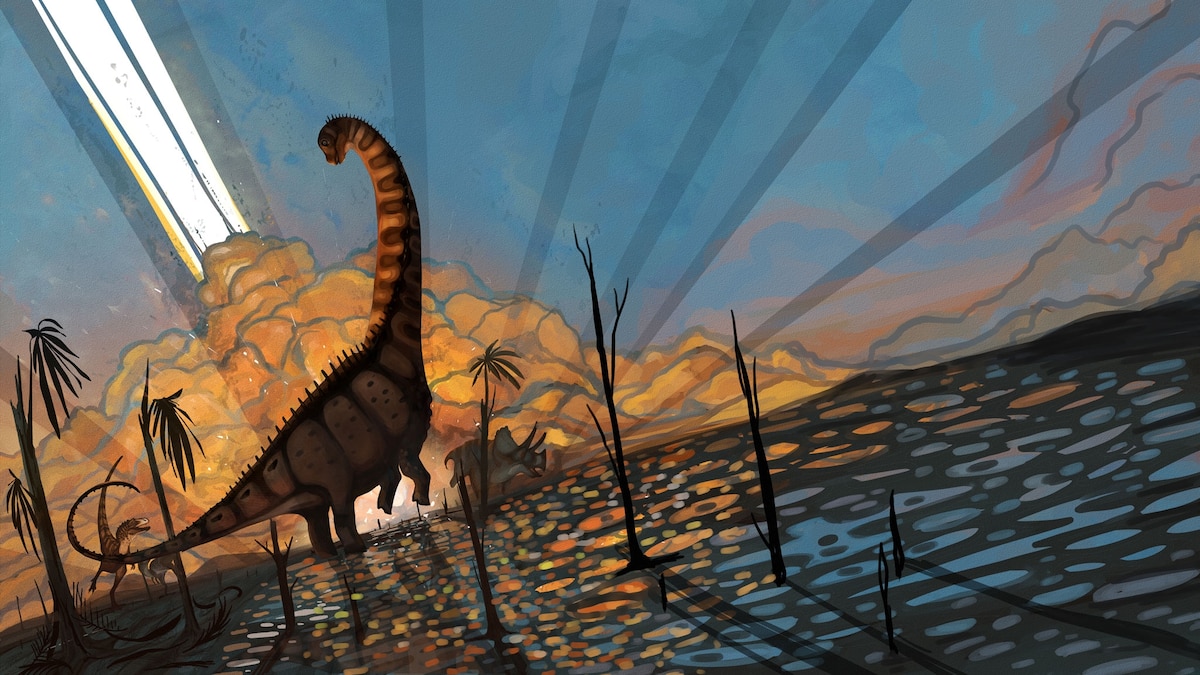(Would dinosaurs have died without an asteroid strike? Here’s the science.)
Among the dinosaurs that dominated the landscape in prehistoric New Mexico during this period were true giants, like the immense long-necked herbivore Alamosaurus.
“I can imagine the scene, one minute a jet plane-sized dinosaur was shaking the ground as it walked. The next minute the whole Earth was shaking with the energy unleashed by the asteroid,” says National Geographic Explorer Stephen Brusatte, a paleontologist from University of Edinburgh in Scotland and an author of the study.
The finding, published Thursday in Science, supports the idea that North America’s dinosaurs were not fading away before they went out with a bang. The study also provides insight into the diversity of dinosaur species that lived in the southwestern region of North America at the end of the Cretaceous period.
New dates for New Mexico’s fossils
A great deal of what paleontologists know about the fate of the non-avian dinosaurs comes from fossils discovered in western North America, particularly at the Hell Creek and Fort Union Formations. These rock outcrops in Montana, the Dakotas, and Wyoming preserved snapshots of land-dwelling species before and after the collision. They show that dinosaurs such as Tyrannosaurus, Triceratops, Edmontosaurus, and Ankylosaurus inhabited the ancient floodplains preserved around the Rocky Mountains.

